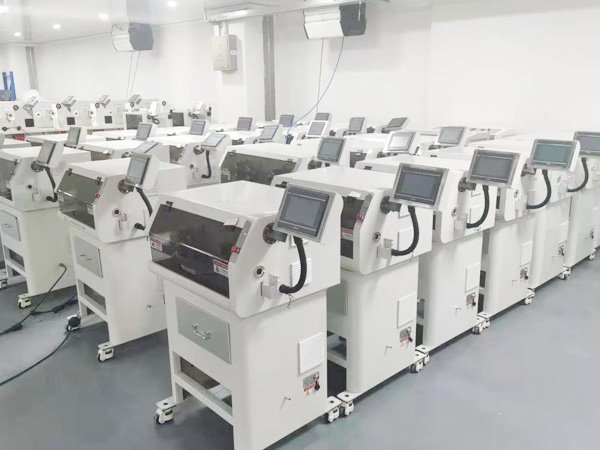Introduction: The Need for Automation in Home Appliance Wiring
As household devices become more intelligent and interconnected, the internal wiring harness systems must keep up with increasingly complex performance and safety requirements. From washing machines and refrigerators to microwaves and air conditioners, reliable cable processing is essential. This demand has fueled the evolution of home appliance wire harness automation, offering enhanced efficiency, consistency, and quality in production lines.

Stripping: Laying the Foundation for Precision Connections
The automation process begins with high-precision wire stripping. In traditional manual setups, wire length inconsistencies and insulation damage often lead to product defects. Automated stripping machines ensure consistent strip lengths and minimize conductor damage, especially when handling fine wires and multi-core cables used in smart appliances.
Advanced rotary blade stripping machines and computer-controlled systems can handle a range of insulation types and wire diameters. The ability to configure cutting lengths, stripping depth, and wire gauge tolerance ensures minimal rejection rates during subsequent processes.
Cutting & Feeding: Seamless Material Handling
Wire cutting and prefeeding, often underestimated, are key to maintaining continuous production. Automated cable cutting and feeding machines optimize throughput by synchronizing cutting lengths with stripping and crimping stations.
For large-scale home appliance manufacturers, consistency in wire length is vital for PCB connections, grounding wires, and signal lines. Multi-core wires for washing machines or multi-sensor refrigerator wiring benefit from programmable cutting and material distribution.
Crimping: Ensuring Reliable Electrical Contacts
Crimping is a critical step where mechanical reliability and electrical conductivity intersect. Automated crimping machines—single-head or dual-head—reduce manual labor while improving crimp accuracy through servo-driven mechanisms and crimp force monitoring.
Home appliances often use a wide range of terminal types: faston terminals, JST connectors, and flat plugs. An automated crimping system with terminal auto-feeding significantly reduces setup time and human error, especially when integrated with vision alignment and error detection.
Taping and Bundling: Enhancing Safety and Assembly
After crimping, the wire harness is bundled and taped to meet flame retardancy and insulation standards. Machines dedicated to harness taping offer programmable overlap control, rotation angles, and variable bundling diameters.
This is especially critical in devices like ovens and dishwashers, where exposure to moisture or heat necessitates robust harness insulation. Automation ensures uniform wrapping, reduces tape consumption, and allows precise integration with plastic or metal casing during final assembly.
Quality Inspection: Guaranteeing Compliance
Modern home appliance wire harness production lines often integrate automated quality inspection—covering pull-force testing, continuity checks, and visual inspections via AI cameras. These steps guarantee each harness meets IEC and CE standards for domestic safety.
End-of-line testing systems also help capture deviations in crimp integrity, conductor presence, or wiring sequence, minimizing returns and warranty issues.

Conclusion: The Future of Household Wire Harness Production
Incorporating end-to-end automation into home appliance wiring harness manufacturing is no longer optional—it’s essential. From wire cutting and stripping to crimping, taping, and testing, home appliance wire harness automation enables faster turnaround, lower defect rates, and higher overall equipment effectiveness (OEE).
Whether you’re a global OEM or a local appliance assembler, embracing automation ensures your wire harness systems are not just built for today’s devices, but ready for tomorrow’s smart homes.
